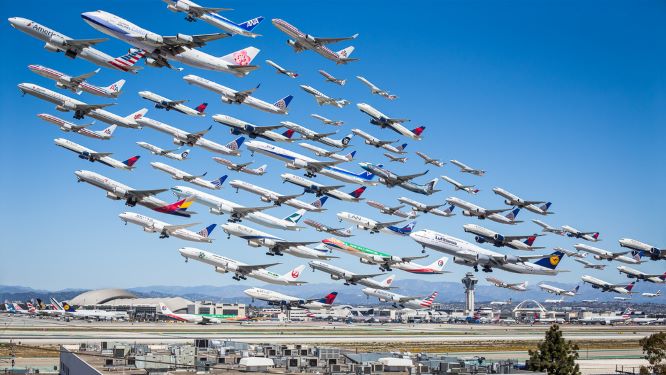7 Aerospace Giants Call for Decarbonization of Aviation Sector

The chief technology officers of seven major aerospace manufacturers have released a joint statement outlining how the firms are committed to sharing best practice to decarbonize the sector as it approaches its “third era” of electrification and digitalization.
The signatories claim that technological innovation will enable a “relentless pursuit of improvements in fuel efficiency and reduced CO2 emissions”.
Chief technology officers from Airbus, The Boeing Company, Dassault Aviation, GE Aviation, Rolls-Royce, Safran and United Technologies Corporation issued the joint statement to highlight how the industry is “working at an unprecedented level” to mitigate climate change impacts.
The Strategy
There are three major technological elements to sustainable aviation according to the joint statement:
- Continuing to develop aircraft and engine design and technology in a relentless pursuit of improvements in fuel efficiency and reduced CO2 emissions.
- Supporting the commercialization of sustainable, alternate aviation fuels. Around 185,000 commercial flights have already proven that today’s aircraft are ready to use them.
- Developing radically new aircraft and propulsion technology and accelerating technologies that will enable the ‘third generation’ of aviation.
- Other factors, such as efficient air traffic management and aircraft routing that minimizes fuel consumption also have a vital part to play.
The signatories of the letter note that aircraft and engine design, the commercialization of sustainable and alternative fuels (SAFs) and the integration of “third era” technology such as advanced engine thermodynamic efficiencies, electric and hybrid-electric propulsion, digitization, artificial intelligence will take place. The companies believe that larger aircraft ‘will begin to benefit from’ improvement in efficiency through management of aircraft drag and distributing propulsion in new ways. New materials will also make aircraft lighter thus improving efficiency.
Global aviation contributes to more than two percent of human-made carbon dioxide emissions. The industry is facing a challenge to reduce net CO2 emissions even while demand for air travel and transport grows significantly.
The joint statement says the aviation community has ‘voluntarily committed’ to meet a set of ‘aggressive’ targets for enhanced airplane environmental performance. Targets set by the Advisory Council for Aeronautics Research in Europe call for a 75 percent reduction in CO2, a 90 percent drop in NOx and a 65 percent decrease in noise by 2050, compared with year 2000 levels. Meanwhile, the Air Transport Action Group (ATAG) has set a target: reduce CO2 emissions to half of the year 2005 levels by 2050, and to limit the growth of net CO2 emissions by 2020.




